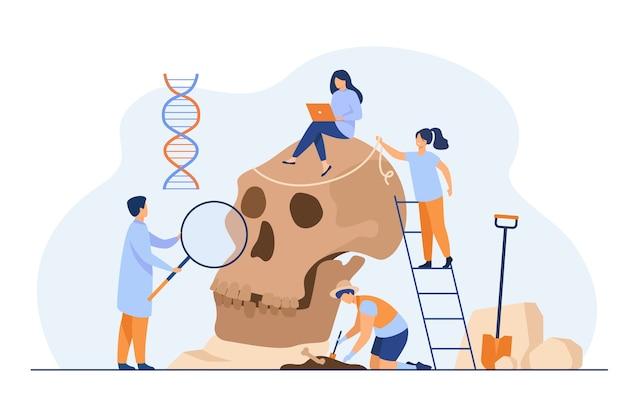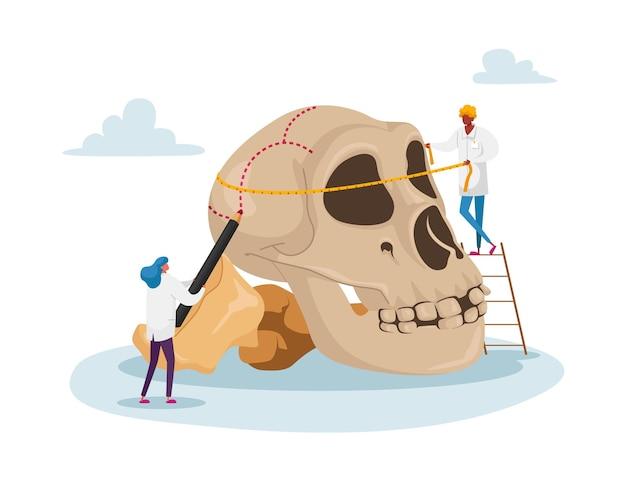Prehistory, the period before written records, holds numerous mysteries about the origins and development of human cultures. How do archaeologists and anthropologists unravel the secrets of this ancient time? In this blog post, we will explore the methods and techniques used by these fascinating professionals to study prehistory.
From analyzing artifacts to studying ancient bones, archaeologists employ a range of tools to gain insights into the lives of our ancestors. They carefully excavate ancient sites, piecing together fragments of pottery, stone tools, and other remnants of past civilizations. On the other hand, anthropologists focus on understanding human behavior and society, examining prehistoric remains to uncover clues about how early humans lived, communicated, and organized themselves.
So, if you’ve ever wondered about the techniques and qualifications required to delve into the mysteries of prehistory, read on. We’ll explore the fascinating world of archaeological and anthropological research and shed light on the insights gained about tool use, human behavior, and more. Plus, we’ll answer questions like “What qualifications do I need to be an anthropologist?” and “Is anthropology a viable career?” Let’s embark on this journey to unravel the secrets of our past together!

How Archaeologists and Anthropologists Study Prehistory
In the fascinating world of prehistory, archaeologists and anthropologists play a vital role in unveiling the mysteries of our past. Through their scientific methods and meticulous research, they paint a vivid picture of ancient civilizations and the story of humankind’s evolution. So, how do these intrepid scholars go about studying the vast expanse of prehistory? Let’s delve into their methods, tools, and strategies!
Conducting Excavations: Unearthing Clues from the Past
Archaeologists are known for their love of digging in the dirt, and for good reason! By carefully excavating sites, they unearth a treasure trove of valuable artifacts and structures, shedding light on how ancient communities lived. From ancient dwellings to pottery fragments, every discovery contributes to our understanding of prehistoric cultures.
Stratigraphy: Digging Through Layers of Time
One of the key methods archaeologists use is stratigraphy, which involves analyzing layers of soil and sediment to determine the sequence of events at a particular site. By studying the different strata, experts can establish the relative chronology and determine the age of artifacts discovered within each layer. It’s like peeling back the layers of time!
Radiocarbon Dating: Unveiling the Age of Artifacts
Radiocarbon dating, a groundbreaking technique, allows archaeologists to determine the age of organic materials like bones and wood with remarkable accuracy. By measuring the amount of radioactive carbon-14 present in a sample, scientists can estimate its age and piece together a more accurate timeline of prehistoric events. It’s like a scientific time machine!
Anthropology: The Human Connection
While archaeologists focus on material remains, anthropologists study the broader aspects of prehistoric cultures, including social structures, beliefs, and practices. Through ethnographic research, they gain insight into the lifestyles and traditions of modern indigenous communities, which can provide valuable parallels and clues to understanding ancient civilizations. It’s like solving a captivating puzzle with living pieces!
Reconstruction and Visualization: Bringing the Past to Life
Archaeologists and anthropologists don’t just stop at collecting artifacts and data. They collaborate with artists and experts in digital reconstruction to create vivid visualizations of ancient sites and the people who once lived there. These careful reconstructions help us visualize and connect with our prehistoric ancestors, capturing the imagination of both scholars and the general public alike. It’s like stepping back in time without needing a time machine!
The Spirit of Collaboration: Puzzle Pieces from Across Disciplines
Studying prehistory is a complex endeavor that requires the collaboration of various disciplines like geology, biology, chemistry, and more. By combining their expertise, researchers can unravel the intricate web of prehistoric life, piecing together each fragment to form a more complete picture of our shared history. It’s like assembling a giant puzzle with friends who each hold a special piece!
So, the next time you gaze at an ancient artifact or marvel at the reconstruction of a long-lost civilization, remember the dedicated work of archaeologists and anthropologists. Their passion for uncovering the secrets of prehistory allows us to better understand our roots and appreciate the incredible journey that has brought us to the present day. Keep digging, keep exploring, and keep marveling at the wonders of our shared human story!

FAQ: How do archaeologists and anthropologists study prehistory?
Welcome to our FAQ section on how archaeologists and anthropologists study prehistory. Here, we’ll answer some commonly asked questions about these fascinating fields and shed light on the mysteries of our ancient past in a friendly and humorous way.
How do archaeologists and anthropologists study prehistory
To unlock the secrets of prehistory, these intrepid scholars use a combination of scientific methods and good old-fashioned detective work. Archaeologists dig deep into the earth, excavating ancient sites to uncover artifacts, bones, and remnants of past civilizations. These clues provide valuable insights into how our ancestors lived, what they ate, and how they interacted with their environment.
Meanwhile, anthropologists take a broader approach, studying the cultural and social aspects of prehistoric societies. Through meticulous research, they piece together the puzzle of our human ancestors by analyzing ancient tools, art, language, and even human remains. By comparing different cultures and examining their similarities and differences, anthropologists paint a vivid picture of prehistoric life.
What have anthropologists learned about the use of tools during prehistory
Anthropologists have unearthed a wealth of knowledge about our ancient tool-wielding predecessors. It turns out that our early ancestors were quite handy! They crafted stone tools for everything from hunting and gathering to carving mammoth-sized masterpieces. By analyzing these tools, anthropologists have discovered the ingenuity and resourcefulness of prehistoric societies. So, the next time you struggle to assemble that “some assembly required” furniture, remember that our ancestors were once masters of tool-making!
What qualifications do I need to be an anthropologist
Becoming an anthropologist requires dedication, study, and a deep passion for human history. To embark on this scholarly journey, you’ll typically need a bachelor’s degree in anthropology or a related field. From there, you can pursue a master’s or even a doctorate to specialize in a specific area of anthropology. Having a background in archaeology, museum studies, or cultural heritage can also be beneficial. Embrace your inner Indiana Jones and get ready to explore the mysteries of humanity!
How much do PhD anthropologists make
Ah, the eternal question. While we can’t predict your future bank balance, we can give you an idea of the potential earnings of a doctorate-holding anthropologist. As of 2023, the average salary for a PhD anthropologist in the United States ranges from $60,000 to $90,000 per year. Of course, these figures can vary depending on factors such as experience, specialization, and geographic location. But fear not, fellow knowledge-seeker – the wealth of wisdom gained from studying prehistory is priceless!
Is anthropology a career
Absolutely! Anthropology offers a variety of exciting career paths. With a degree in anthropology, you can delve into fields such as cultural resource management, forensic anthropology, museum curation, academic research, and even consulting for businesses or governments. The skills honed in anthropology – critical thinking, cross-cultural understanding, and problem-solving – are highly valued in many sectors. So, if you dream of unraveling the mysteries of our ancient past while forging a fulfilling career, anthropology might just be the perfect fit for you!
And there you have it – a glimpse into the world of archaeology and anthropology and how these incredible scholars study prehistory. We hope we’ve satisfied your curiosities and left you inspired to delve deeper into the mysteries of our human origins. Happy exploring!
Please note that the information provided in this article is based on general knowledge and may vary depending on individual circumstances and the ever-evolving field of anthropology.
